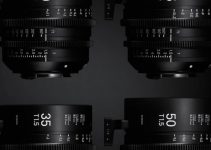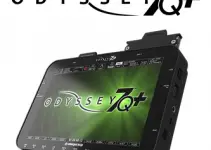Besides being extremely exciting and compelling, the life of a professional colourist can be also quite challenging and overwhelming so knowing well how to utilise some of the essential tools of your favourite colour grading platform is just as crucial to understanding the fundamental aspects of cinematography and art of capturing an image. Unfortunately, trusting your eyes and your internal aesthetics is just not enough for being a successful colourist.
Some seasoned professionals tend to believe that being attentive and educated on the technology side is even more important to become a true colour grading professional. Making your footage match perfectly from shot to shot simply doesn’t happen over night. Moreover, leveraging your craft and knowledge and becoming more and more experienced in delivering professionally looking grades usually takes much more time and effort. Using some useful techniques down the road may also speed up the process.
In this episode of Resolve in a Rush, Alexis Van Hurkman from Rippletraining.com brings some valuable insights on how to use RGB Parade Scopes to match two shots in DaVinci Resolve 11 or 12.
In the given example above we can easily see that the RGB Parade Scopes provide some beneficial information that will help us to decide which exact part of the image needs to be further tweaked and corrected. For instance, looking at the first clip, Alexis notices that the bottoms of the three Waveforms are fairly well-balanced while the tops show that there is a certain imbalance in highlights with weaker red and stronger blue prevailing.
In the second shot, the Waveforms are even more unbalanced compared to those in the first one. In order to match this shots Alexis initially tries to remove some of the blue in the shadows of the image by utilising the Lift Control in Resolve, thus making the bottoms of the three Waveforms lining up as close as possible to the way they do in the first shot.
Then the colourist uses the Luminance Curve to balance the mid tones and shadows, thus keeping the lightness in both talent’s face and in the rest of the scene. Furthermore, to balance the mid tones Alexis utilises the Gamma control by pushing the gamma up towards the complementary of the blue colour. Finally, he desaturates the second image to the point where he gets equivalent and evenly balanced colours between the two shots.
This step-by-step colour grading tutorial shows us only one of the numerous possible ways of getting well-balanced and decently colour corrected shots. In this instance, the process is more like taking some small steps and doing really slight adjustments while analysing properly the information that the RGB Parade provides.
The ability to use the right tool in order to properly balance your image, thus bringing a certain mood and feel to the final grade is something that can be learned and crafted when you really have passion and patience to achieve that goal.
Being fairly skilled and experienced on both the creative and technical side and knowing the right tools can significantly improve your workflow and make you better not only in regards of colour grading but in any other aspect of the creative process.
[Source: Ripple Training]
Disclaimer: As an Amazon Associate partner and participant in B&H and Adorama Affiliate programmes, we earn a small comission from each purchase made through the affiliate links listed above at no additional cost to you.




